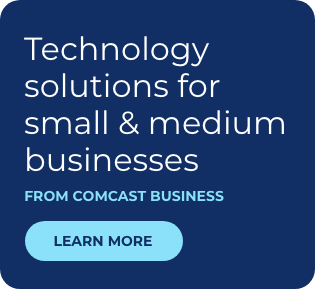“Big Wows” and “Little Wows”: Striking a New CX Balance

Businesses have been committed to customer experience (CX) as a primary differentiator for quite a few years now. And in the CX arena, our eyes have traditionally been trained on the “big wow” moments—those grand, memorable experiences designed to spur excitement and create lasting brand memories. And those moments are still critically important for brand awareness and affinity.
But the calculus is changing. As the business landscape evolves, so too does our understanding of what truly drives customer loyalty and growth. And today, it’s not just the “big wows” that matter. The “little wows” do, too.
So what do I mean by that?
Imagine a day where every interaction, whether in-person or online, just clicks. Maybe it’s an unexpectedly accurate product recommendation online, or a quick recognition when you walk into a restaurant whose loyalty program you’ve enrolled in. Or maybe it’s just that you only have to enter your demographic information once—or even better, not at all—when making an appointment. These are the little wows. In some cases, they represent small moments of delight; in others, simply the absence of what may have previously been a bad experience. But in every case, they remove friction and demonstrate that a brand or company cares about you and your time.
That’s the nuanced challenge businesses face today: crafting not only the memorable—even bombastic—experiences for customers and employees, but also ensuring everyday interactions are smooth, seamless, and connected. It's a delicate balance, but it’s one that businesses are beginning to capably manage with new and emerging technologies.
Bridging the Gap Between Customer and Employee Experience
This attention to detail in crafting customer experiences naturally extends to employees. After all, employees are the frontline ambassadors of a brand's values and service. When a company invests in creating seamless experiences for its employees—through more efficient workflows, flexible environments, or collaboration—it directly translates into improved customer interactions. When employees have a positive experience at work, they are more motivated to perform at their best, leading to higher quality of work, customer satisfaction, and ultimately, improved business profitability and success.
Experience at a Technology Tipping Point
Meanwhile, the technology enabling next-generation experiences is evolving rapidly. From generative artificial intelligence (AI) and data analytics to augmented reality (AR) and virtual reality (VR), these technologies are finding unique applications that are reshaping both CX and employee experience (EX). Business and technology leaders, meanwhile, need to embrace these advancements, understand the connectivity requirements, and determine how they can be best put to use to enhance customer and employee experiences across the spectrum.
Generative AI: Generative AI is revolutionizing experiences by creating wholly new rich media experiences on demand, creating both big and small wows. Consumers and employees are able to interact with personalized, intelligent chatbots to solve problems in the moment, for example, or bypass system categories and filters to find a product or a file by searching using natural language. Generative AI’s capabilities to improve experience while producing actionable insights represent a powerful shift in both CX and EX.
AR and VR: In the workplace, AR and VR are transforming training modules and product demonstrations, making them more engaging and interactive. They’re also being used in remote assistance and guidance—helping a field technician overlay instructions on a real-world object, for example—improving efficiency and accuracy. For customers, these technologies provide a virtual yet realistic experience of products and services, enhancing engagement and satisfaction. VR enables realistic online shopping and immersive training for customer service representatives, while AR leads to better product understanding and fewer customer inquiries, in turn removing friction.
Data-driven Insights: The power of data analytics in shaping experiences is immense. By understanding customer preferences and behaviors through data, brands can anticipate needs and tailor services more effectively. Predictive and prescriptive analytics not only help in understanding current customer behaviors, but also predict future behaviors and recommend actions to enhance customer engagement. This can involve analyzing customer journey data to identify potential drop-off points and improve the overall customer journey. This proactive approach in anticipating and meeting customer needs is essential in creating those crucial 'little wows'.
The Role of Continuous Innovation
Achieving excellence in customer and employee experience is not a static goal, but an ongoing journey. It requires a leadership culture that prioritizes continual evolution and innovation. This includes having a technology architecture and partners that empower and enable scaling and growth. The focus should be on constant improvement and adaptation to the ever-changing customer and employee needs.
Today, the ability to create both big and little wows is what sets a brand apart. It's about delivering experiences that not only capture attention, but also foster long-term loyalty and growth. Businesses need to embrace the power of both the latest technology innovations and the human touch to create a holistic and satisfying experience for both customers and employees.
Remember, it's the big—and small – moments that lead to lasting impact.
Learn more about how Comcast Business is helping organizations leverage technology to power customer and employee experiences.
Sometimes, experience is about the big moments. But often, it's about the little ones.
Locked Content
Click on the button below to get access
Unlock NowOr sign in to access all content on Comcast Business Community
Learn how Comcast Business can help
keep you ready for what's next.











